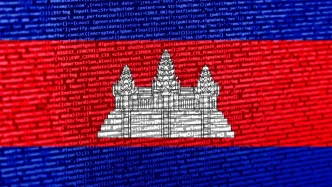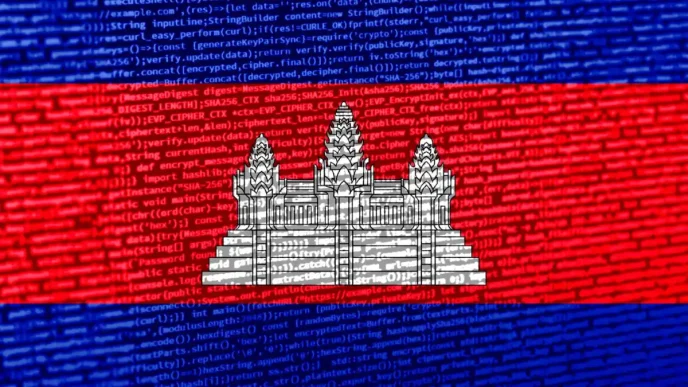In a significant development for Vietnam’s political sphere, recent events suggest a potential shift in leadership dynamics within the Communist Party of Vietnam (CPV). As of early April 2025, speculation is rife in Ha Noi about changes at the highest levels of government, with implications for the country’s policy direction and international relations. While official confirmation remains pending, the unfolding situation has drawn attention from both domestic observers and global analysts, raising questions about Vietnam’s political stability and future governance.
Emerging Speculation on Leadership Changes
Rumors of a reshuffle within the CPV leadership began circulating in early April 2025, following unofficial reports of high-level meetings in Ha Noi. Sources close to the political establishment suggest that discussions may be underway regarding key positions, potentially including roles within the Politburo, the party’s top decision-making body. Though no official statement has been issued by the CPV or state media outlets such as Vietnam News, the speculation has gained traction among political commentators and on social platforms monitored for public sentiment.
The lack of concrete information has fueled a range of theories about the reasons behind a possible leadership change. Some analysts point to internal party dynamics, including the need to balance regional representation and ideological factions within the CPV. Others speculate that external pressures, such as Vietnam’s growing role in global trade and geopolitical tensions in the South China Sea, may be influencing strategic decisions at the top. Without verified details, however, these remain conjectures, and no evidence confirms any specific motives or outcomes at this stage.
Historical Context of CPV Leadership Transitions
Leadership changes within the CPV are historically significant events, often signaling shifts in policy priorities and governance styles. The party, which has governed Vietnam since reunification in 1976, operates under a collective leadership model, with the General Secretary, President, and Prime Minister forming the core of executive power. Transitions are typically planned during party congresses, held every five years, though unexpected changes can occur due to health issues, political missteps, or anti-corruption campaigns—a key focus of the CPV in recent years.
The most recent major transition occurred during the 13th National Congress in 2021, when Nguyen Phu Trong was re-elected as General Secretary, emphasizing continuity and anti-corruption efforts under his “blazing furnace” initiative. Trong’s leadership has been marked by a dual focus on economic modernization and strict political control, a balancing act that has defined Vietnam’s trajectory over the past decade. If a leadership change is indeed on the horizon in 2025, it could indicate a departure from this approach or a recalibration of priorities, depending on the figures who emerge in key roles.
Potential Implications for Domestic Policy
Should a leadership reshuffle materialize, its impact on domestic policy could be profound. Vietnam has made significant strides in economic development, becoming a hub for manufacturing and foreign investment, particularly in sectors like electronics and textiles. The country’s leadership has prioritized integration into global markets, evidenced by trade agreements such as the Comprehensive and Progressive Agreement for Trans-Pacific Partnership (CPTPP) and the EU-Vietnam Free Trade Agreement (EVFTA). A new leader or faction within the CPV could either reinforce this outward-looking strategy or shift focus toward domestic challenges, such as income inequality and environmental degradation.
One area of particular interest is the ongoing anti-corruption campaign, which has led to the prosecution of numerous high-ranking officials and business leaders in recent years. While the campaign has been praised for promoting transparency, critics argue it has also been used to sideline political rivals within the party. If a new leadership prioritizes different approaches to governance, the intensity or direction of these efforts could change, potentially affecting public trust and party cohesion. For now, observers can only speculate on how such policies might evolve, pending official announcements.
International Reactions and Geopolitical Stakes
Vietnam’s political developments are not unfolding in isolation; they carry significant weight for regional and global stakeholders. The country occupies a strategic position in Southeast Asia, balancing relations with major powers like China, the United States, and the European Union. Its stance on issues such as the South China Sea disputes and trade partnerships is closely watched by international actors. A shift in leadership could influence Vietnam’s foreign policy, particularly if new figures advocate for a more assertive or conciliatory approach toward neighboring China, with whom Vietnam shares a complex history of cooperation and conflict.
Analysts from trusted outlets like Reuters have noted that any uncertainty in Ha Noi could prompt reactions from foreign investors, who have poured billions into Vietnam’s economy over the past decade. Stability and predictability in governance are key factors for multinational corporations operating in the country, and a prolonged period of ambiguity might affect confidence. Meanwhile, diplomatic circles in Washington and Beijing are likely monitoring the situation for signs of how Vietnam might align in the broader US-China rivalry. As of now, no foreign government has issued a formal statement on the rumors, reflecting the speculative nature of the current discourse.
Public Sentiment and the Role of State Media
On the ground in Vietnam, public sentiment appears mixed, based on anecdotal evidence and social media discussions. While the CPV maintains tight control over information dissemination, platforms like X reveal a range of opinions, from cautious optimism about potential reforms to skepticism about meaningful change within a one-party system. The Vietnam Fatherland Front, a political coalition aligned with the CPV, has not commented on the rumors, nor have independent voices been able to openly critique the situation due to restrictions on free expression under Vietnam’s cybersecurity laws.
State media, a primary source of official information, has remained silent on the issue as of April 8, 2025. This silence is not unusual, as the CPV often delays public announcements until decisions are finalized to project unity and control. For many Vietnamese citizens, the absence of news is itself a signal to wait and see, a reflection of the opaque nature of political processes in the country. Until clarity emerges, public reactions will likely remain subdued, shaped by both historical precedent and current restrictions on open dialogue.
Economic Considerations Amid Uncertainty
Economically, Vietnam stands at a critical juncture, with growth projections for 2025 remaining robust despite global headwinds. The potential for leadership changes adds a layer of uncertainty to an already complex landscape. For instance, infrastructure projects, often funded through foreign loans and public-private partnerships, could face delays if decision-making at the top is disrupted. One such project, the North-South Expressway, valued at billions of Vietnamese Dong (with costs in segments reported at approximately 10 billion VND (US$400,000) per kilometer in some estimates), symbolizes the country’s ambition but also its reliance on stable governance for execution.
Moreover, small and medium enterprises, which form the backbone of Vietnam’s economy, are sensitive to policy shifts. A change in leadership could bring new regulations or incentives, impacting sectors from agriculture to technology. While it is too early to predict specific outcomes, the business community in Ho Chi Minh City and Ha Noi is undoubtedly watching closely, aware that political decisions in Vietnam often have immediate economic ripple effects.
As Vietnam navigates this period of speculation, the eyes of both its citizens and the international community remain fixed on Ha Noi. Whether the rumors of a leadership change prove true or not, the situation underscores the intricate balance of power within the CPV and the broader implications for a nation on the rise. Questions linger about how Vietnam will position itself in the coming months, both domestically and on the global stage, as the world waits for official word from the heart of its political system.














